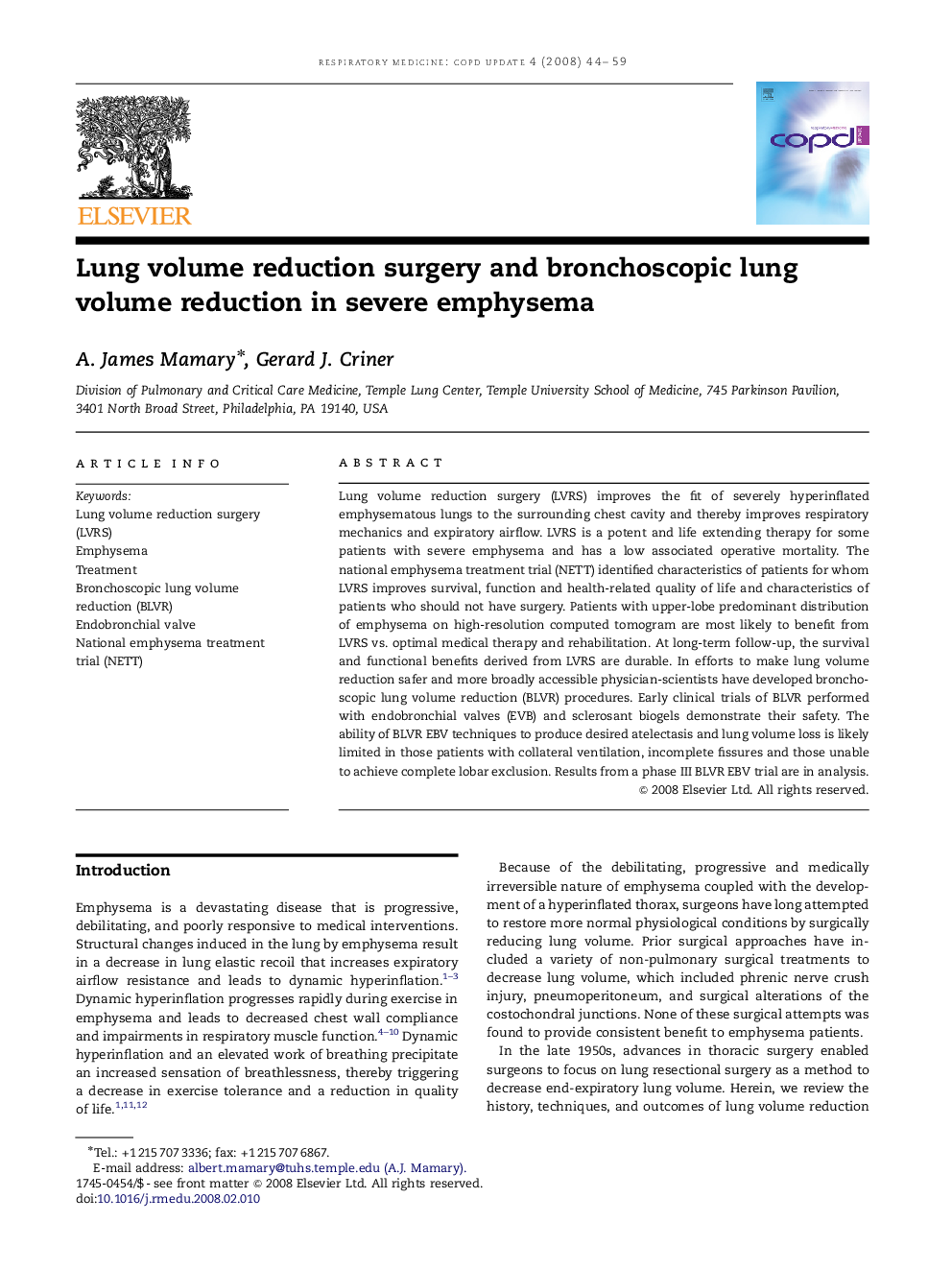| Article ID | Journal | Published Year | Pages | File Type |
|---|---|---|---|---|
| 4213380 | Respiratory Medicine: COPD Update | 2008 | 16 Pages |
Lung volume reduction surgery (LVRS) improves the fit of severely hyperinflated emphysematous lungs to the surrounding chest cavity and thereby improves respiratory mechanics and expiratory airflow. LVRS is a potent and life extending therapy for some patients with severe emphysema and has a low associated operative mortality. The national emphysema treatment trial (NETT) identified characteristics of patients for whom LVRS improves survival, function and health-related quality of life and characteristics of patients who should not have surgery. Patients with upper-lobe predominant distribution of emphysema on high-resolution computed tomogram are most likely to benefit from LVRS vs. optimal medical therapy and rehabilitation. At long-term follow-up, the survival and functional benefits derived from LVRS are durable. In efforts to make lung volume reduction safer and more broadly accessible physician-scientists have developed bronchoscopic lung volume reduction (BLVR) procedures. Early clinical trials of BLVR performed with endobronchial valves (EVB) and sclerosant biogels demonstrate their safety. The ability of BLVR EBV techniques to produce desired atelectasis and lung volume loss is likely limited in those patients with collateral ventilation, incomplete fissures and those unable to achieve complete lobar exclusion. Results from a phase III BLVR EBV trial are in analysis.
